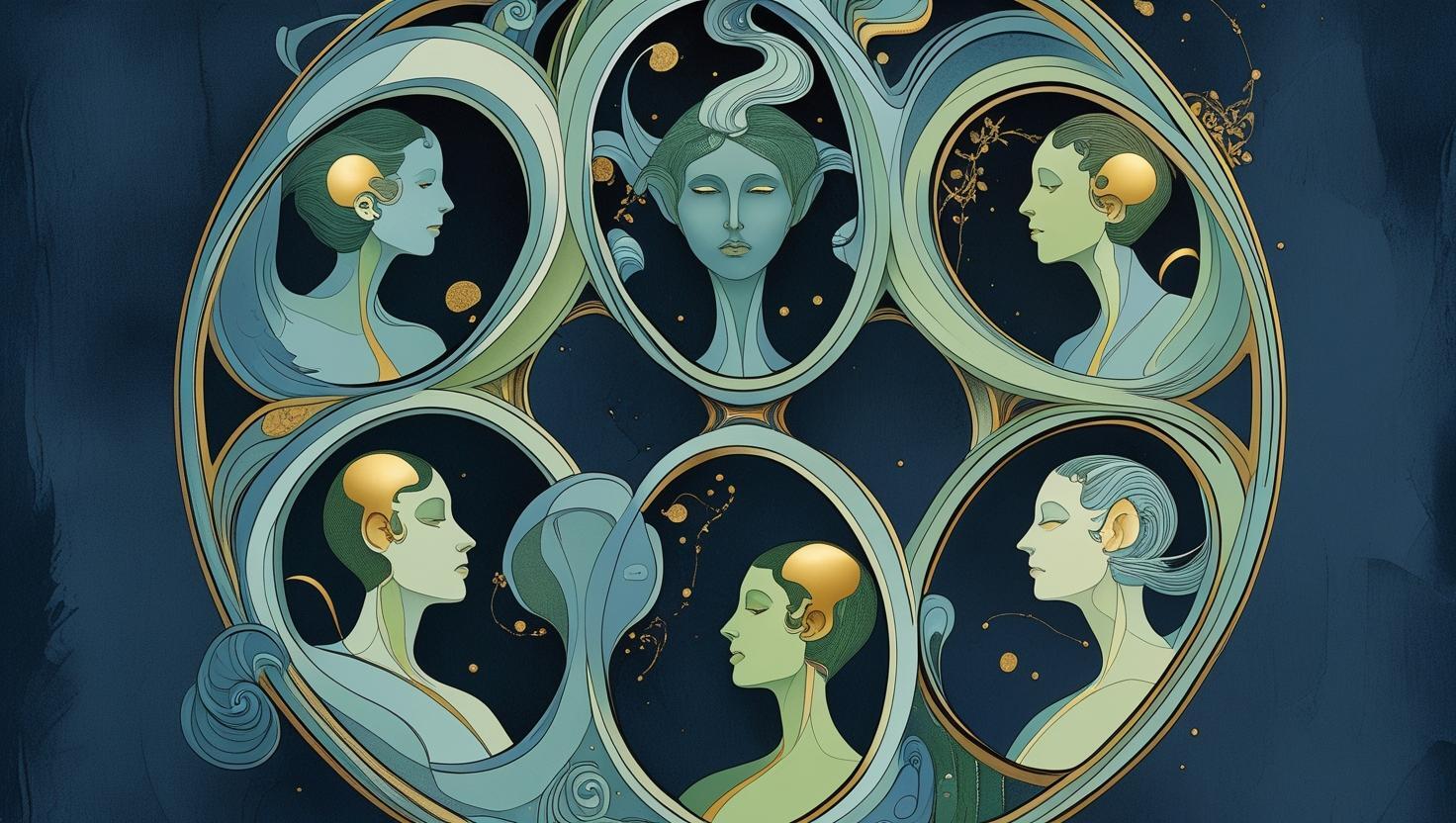Why We Can’t Change Our Minds Unless We Change Our Hearts First
I’ve been receiving more and more questions lately on the role of emotions in vertical development. Here’s a throwback to an article I wrote about my discovery of a special emotional process that seems to act as both a prerequisite for and enabler of adult development. l’m looking forward to reading your thoughts and comments.
In my PhD research I studied a group of 35 senior leaders - part of a larger group of 180 participants in a top executive program in Australia and New Zealand. The intention was to map their lived experience of vertical development as they undertook this 6-month-long, intense learning journey. As it happened, just as the program was about to start, the COVID-19 pandemic hit and all of the group was thrown into one of the biggest experiments of their lives. The program moved online, more than half of participants were in lockdown for months, leaders shifted their businesses to work-from-home, parents were home-schooling, relatives were cut-off from each other and a general sense of confusion and anxiety floated in the air.
Through the program, participants took a developmental assessment (twice) and journaled every week for 28 weeks. They reflected on their brightest and hardest moments. They shared times when they were wise and times when they showed up at their worst. They shared the grief of losing loved ones; struggling with mental health or supporting others who were struggling. They re-discovered the joy of spending their days close to their children and pets, free of hours-long commutes to work; experienced the stress of being parents/teachers/entertainers - all at once. They had open, vulnerable conversations with their teams like never before; were inspired by people around them; felt out of their depth and were amazed at how resilient they discovered they could be.
The journalling exercise, which started off as a research tool, became a learning and healing tool for many of them. At the very end of the program, as they re-took the developmental assessment and sat through an in-depth hour-long interview, many reflected on their sinuous journey through pandemic, life upheaval and what was often a challenging, confronting and inspiring learning program. Only a third of them developed vertically into the next stage. A third stagnated. And a third regressed into an earlier stage than 6 months previously.
What made the difference?
As I sifted through hundreds of journal entries, pages of interview transcripts and sentence stems in developmental assessments, I had all sorts of hypotheses and many more questions. Perhaps people already operating from a later stage of development were better equipped to deal with upheaval? Perhaps more developmentally mature leaders would approach a learning program, like the one they were undertaking, with more openness? What made people revert to earlier stages of thinking? Did they really lose their capacity for complexity, or was it only temporary? And if temporary, how might they recover their lost capacity? What, if anything, did those who developed have in common?
What emerged from the data both surprised me and, intuitively, felt like a confirmation - something I had seen for years in coaching leaders, but had never been able to properly articulate.
Finding some interesting ideas here? Feel free to share this post with others who might use this reflection.
The single most powerful differentiating factor between leaders who developed and leaders who didn’t was the way they dealt with difficult emotions.
When our world is shaken to its core and everything we have ever held as true is questioned, we experience what Jack Mezirow (the father of transformative learning) called "disorienting dilemmas” - moments when your mind is stretched beyond its ability to get back to its original ‘shape’. Disorienting dilemmas are crossroads when life simply doesn’t make sense any more, when our current lens is of no use and we’re offered an opportunity to grow our minds into new ways of seeing and, with them, our hearts and bodies into new ways of being. That kind of ‘stretching’ leads to transformation and is, at the core, what we have come to call ‘vertical development’.
And yet, while all the leaders in my research were confronted with disorienting dilemmas, not all of them transformed. Some even shrank into smaller versions of themselves, reverting to less, not more mature mindsets and behaviours. That seemed to happen because disorienting dilemmas come with very difficult emotions. Anxiety, confusion, fear, grief, shame, guilt - a whole panoply of flavours of pain. If left unexamined and unmanaged, these emotions become stoppers for growth.
Most people, as would be expected, naturally step back in the face of emotional pain. They reject the pain and, as it turns out, with it they unconsciously refuse the learning. A few, though, do something counterintuitive. They get curious about the pain. They choose to allow themselves to feel it fully and inquire into what it might teach them. They treat those hard emotions as indications that they’ve reached an ‘edge’, beyond which more personal growth awaits.
Those were the people who experienced vertical development from the turmoil. For them, the best way OUT was THROUGH.
This minority of leaders had a strong sense of agency and choice - not over the context, which was out of their control - but over how they chose to react to the context. They met their difficult (‘edge’) emotions with curiosity. They were eager to investigate what might be learnt from anxiety or fear.
Interestingly, curiosity did not make the anxiety disappear, but it did something remarkable: it made it bearable.
What these leaders did was to create an inner space, which I have come to call ‘the contrasting emotions space’ where pain/grief/fear could co-exist with curiosity and allow them to step towards that which scared them most. Once the contrasting emotions space was created, people were more likely to reflect further, to challenge their own mindsets, to let their mind be changed by new ideas and perspectives, to find new meaning in the situations they were in and, most importantly, to allow themselves to experiment with new behaviours that they had never tried before.
Their process looked something like this:
To make better sense of this process, think of a disorienting dilemma you might be facing at this very moment in your life. Perhaps you are facing a major life decision, like the end of a long-term relationship - or considering changing careers. Or you might be facing a health crisis or supporting someone you love through one. You might be dealing with the challenges of raising teenage kids or juggling work and parenting. Whatever your challenge is, if you are feeling that ‘what got you here, won’t get you there’, then you’re likely facing a disorienting dilemma.
Here are a few questions to play with:
-
What emotions are you feeling? You might notice sensations in your body - are you able to put a name to them?
-
Do you feel you have a choice over how you react in this situation, or do you feel like a victim of your circumstances?
-
Are you at all intrigued by the difficult emotions you might be experiencing, or do you feel like numbing them or getting rid of them as soon as possible? If you are numbing, how do you do it?
-
If you do choose to be curious, what are you curious about? What questions might you ask of your ‘edge’ emotions, if you did see them as possible teachers?
-
What are you noticing happening when you do allow yourself to feel your feelings and hold your attention on them with curiosity?
-
What old mindsets or beliefs are you finding yourself questioning or perhaps re-considering at this moment?
-
What new perspectives are arising for you?
-
What is one behaviour or approach that you have not tried, but might be worth experimenting with?
It was remarkable to hear the stories of people who had intuitively discovered how to create the contrasting emotions space for themselves. Here is one vignette from a research participant, who developed vertically after the program and was looking back on their growth and what might have facilitated it. As they remembered the feeling of fear when speaking out in front of a large group, they also became intrigued by it. They also reflected on how they transformed:
“Recognizing it, and being at least a little bit curious about it, you know, “I feel a tightening my chest again, why is that happening?", as opposed to just, you know, feeling terrible and reacting.
Curiosity is often about taking no action. (…) the sitting with it is about giving yourself some space and seeing that things will pass. And that the emotion you feel and of these thoughts that are racing, aren't you and don't define you necessarily. And that perceived threat that you have doesn't come to be. (…) I'm more self-aware. I'm less black and white, I'm less reactive. I'm more comfortable with being uncomfortable. (…) I think seeing the importance of that and how to model that sort of behaviour and create change, and how difficult it was just for me to do it - I can see that's going to be difficult to change others (…) [I] will try and create an environment that fosters change of others, which is probably a better way to put it.”
As you look at the visual of the Contrasting Emotions Space and the vertical development process, you might notice three words on the outer edges of it: Action, Inquiry and Holding Space. While being curious about our difficult emotions feels like an individual choice, what I found is that it’s never always up to the individual alone, and context does matter, A LOT!
It’s crucial to have a safe holding space where we feel supported, understood, allowed to be uncomfortable and to find our way through the darkness. That might be as simple as having trusted friends, mentors or even a good coach or therapist who help us make sense of the mess when we can’t see our way out of it; or it could be as complex as a whole system - an organisation, a community - designed to foster psychological safety (the latter is still so so rare!).
It’s also crucial to be able to inquire - reflect, ask questions, not jump to solve the problem but allow yourself to sit in the confusion and let insights emerge in their own time. Inquiry without action however is nothing but ‘analysis paralysis’. So it’s worth asking yourself, once you feel you’ve taken your time to reflect, what could you now experiment with? What small changes might you make? What manageable risks are you willing to take?
Sometimes people feel that transformation should be like an landscape-shifting earthquake, but in reality, it often feels more like a series of small steps, none of which feel life-changing when we take them, but which together lead us to a whole new path we’ve never experienced before.
Mezirow was criticised for not paying more attention to emotion in his theory of transformative learning. So have many approaches in adult development - most of which emphasise the cognitive. The focus has mostly been on how our thinking evolves toward more complexity and how we get to this place of maturity as our mindset expands.
We have hardly begun talking about how painful the process of vertical development is. And we’ve barely explored what to do with that pain - how to befriend it, make it more bearable, create emotional space within us so we can create more mental space and, in turn, more freedom to deal with the challenges in our lives in new ways.
Perhaps it’s time we turned towards emotions as a gateway towards vertical development. All while remembering none of this growth happens in isolation. We need safe holding spaces where we can allow ourselves to be uncomfortable, to take risks, try new things and fail without crumbling. We need mirrors we can trust, environments where we feel seen and supported, while also being challenged and taken out of our comfort zone.
So how might we create these spaces for each other? And how might we begin doing the hard work of expanding our emotional space, so we can tolerate the inner growth pains that come with personal transformation?
Photo by Eryk Fudala on Unsplash
See original article published by Vertical Development Institute.








